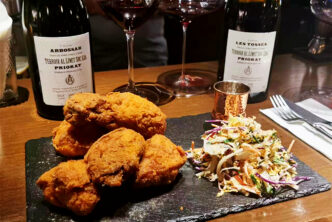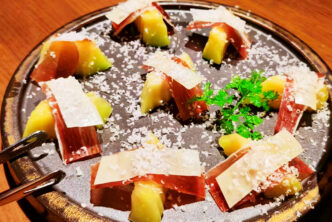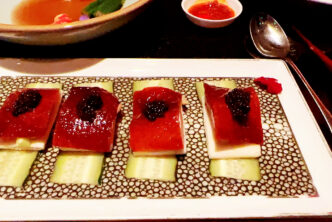Located in the beautiful, very sleek, and modern Bulgari hotel well suited to an international clientele, the seventy seats Il Romito restaurant offers a refined setting and pretty views over the park outside. The details are impressive all around, including a refined mood created by warm brown on lighter tan colour contrasts, unbelievably comfortable armchairs (those in the hotel waiting room/lobby outside the restaurant’s entrance) that were in fact so comfortable I really didn’t want to get up anymore, Murano glass chandeliers and a very elegant, sleek feel all around to the main dining room.
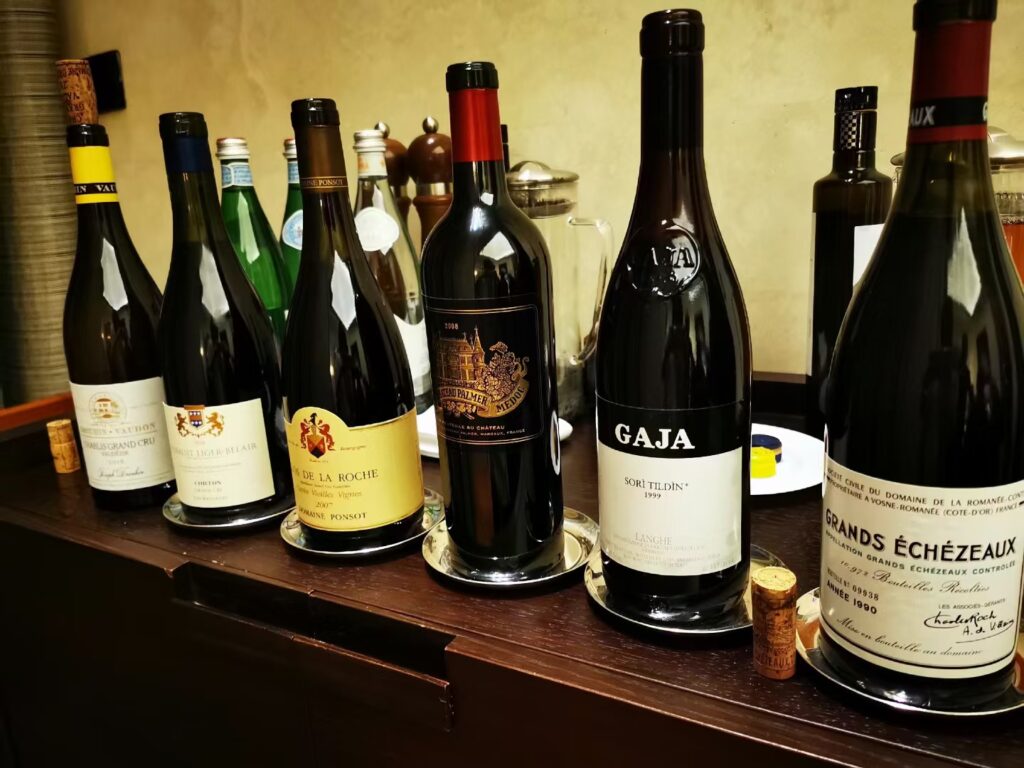
The food is that of Italian chef prodigy Niko Romito, blessed with three Michelin stars in Italy and one here in Bejing. Romito counsels the on-site cooking staff and his cuisine’s philosophy is on full display in Bejing as it is elsewhere, with only apparently simple preparations aiming to reach levels of purity and focus that typify the best in Italian cooking and its recipes. In fact, Italy’s cuisine really is mostly about the freshness of the ingredients rather than their transformation. In correctly executed Italian dishes made with properly sourced and authentic Italian ingredients, the essence, the terroir (the soul even) of the latter are allowed to sing in each plate or bowl. But a certain degree of dexterity is required in Italian cuisine nonetheless, and this combination of the right ingredients and technical prowess is of paramount importance in allowing one to achieve success in executing Italian recipes. But it’s not easy. On this night we had a good meal, but from a place with a similar culinary pedigree, and with similarly outstanding service in a likewise outstanding setting, one expects more food-wise. For example, while the filling of the codfish ravioli was unabashedly excellent, the excessive thickness of the ravioli pasta was considerably less than outstanding. The marinated sea bream was very pure and clean in its flavour profile and thoroughly excellent, but the oscietra caviar was noticeably less intensely perfumed and nutty than many other examples of Acipenser Gueldenstaedetil (the Russian Oscietra sturgeon) eggs I have had before. Little things that are mostly a matter of fine tuning.
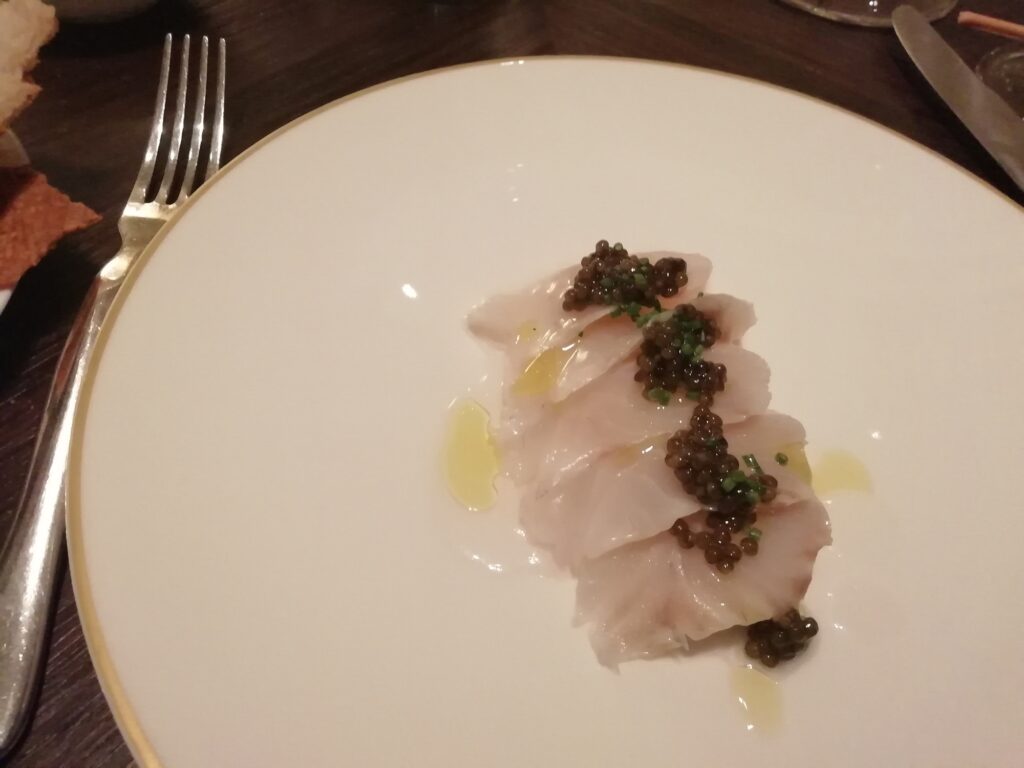
The dinner’s wines were spectacular. I cannot think of too many better ways to start off a dinner than with a marvelous wine from Bouzeron, and the 2018 A&P de Villaine Bouzeron is most certainly just that. In fact, the 2009 is a thing of beauty, very pretty already to look at with its golden tinged pale straw-green hue. At once powerful yet light on its feet, with a bright mineral overlay neatly focusing the vanilla-accented and very pure lemony, buttery and custard cream nuances that the Aligoté Doré variety can deliver in slightly warmer years when it achieves noteworthy levels of ripeness. Bouzeron is an outstanding Appellation of the Côte Chalonnaise the wines of which are underrated and less well known than they should be. Clearly, the A&P de Villaine estate is an outlier in the area: for example, this 2018 is the equal of many more famous Côte de Beaune whites. Next up a Chablis from one of my favourite grand crus. The very pretty Moulin de Vaudon, an eighteenth century watermill straddling the Serein river, is the headquarters of Drouhin’s Chablis operations, launched back in the 1960s when Robert Drouhin understood the potential of an area abandoned because of the cold weather and the ravages caused by phylloxera. The 2017 Drouhin-Vaudon Chablis Grand Cru Vaudésir is a beauty, so light on its feet that it can function as a marvelous aperitif but with sneaky concentration such that it can stand up to more complex dishes as well. The grapes have been organically grown since 1990 and biodynamically farmed since 1999, and the wine is magically pure and mineral, a real essence of Kimmeridgean limestone-accented steely fruitiness. For a Chablis grand cru, it is drinking surprisingly well already, but will be just lovely to drink over the next fifteen years, and likely more. However, I don’t see too many people allowing this beauty to age all that much, given how much fun it is to drink already now. Though painfully young, the 2018 Thibault Ligier-Belair Corton Les Renardes promises to be a real star, with noteworthy depth and complexity and years of fine development ahead. From vines planted in 1956 and located at mid-slope in what is probably the best part of this cru, it is a rare Corton marked not so much by power but by finesse, something in no small measure due to the limestone vein that runs right there (and in fact this is a rare site in that there is more limestone at the bottom of the hill and more clay at the top, which is the opposite of what is usually true in most other crus). I had had a couple of bottles of the 2007 Domaine Ponsot Clos de la Roche Cuvée Vieilles Vignes just a few weeks before this dinner and had found there to be just a touch of variability between them. As always, storage is a real issue with older wines and unless provenance is assured, the result you may end up getting for your hard earned cash might be less than ideal. But the bottle we had on this night was simply superb, in fact probably the best example of this iconic wine from 2007 I have ever tried. Pure and perfumed, with a sleek and refined mouthfeel but plenty of pure Pinot Noir fruit and real Morey St.Denis power, this beautiful red Burgundy, though understandably no longer a spring chicken, was still very young and lively. The delicate aromas and flavours of iron shavings, small red berries, smoked beef and earthtones were at once beguiling, concentrated and powerful yet also refined and light on their feet.
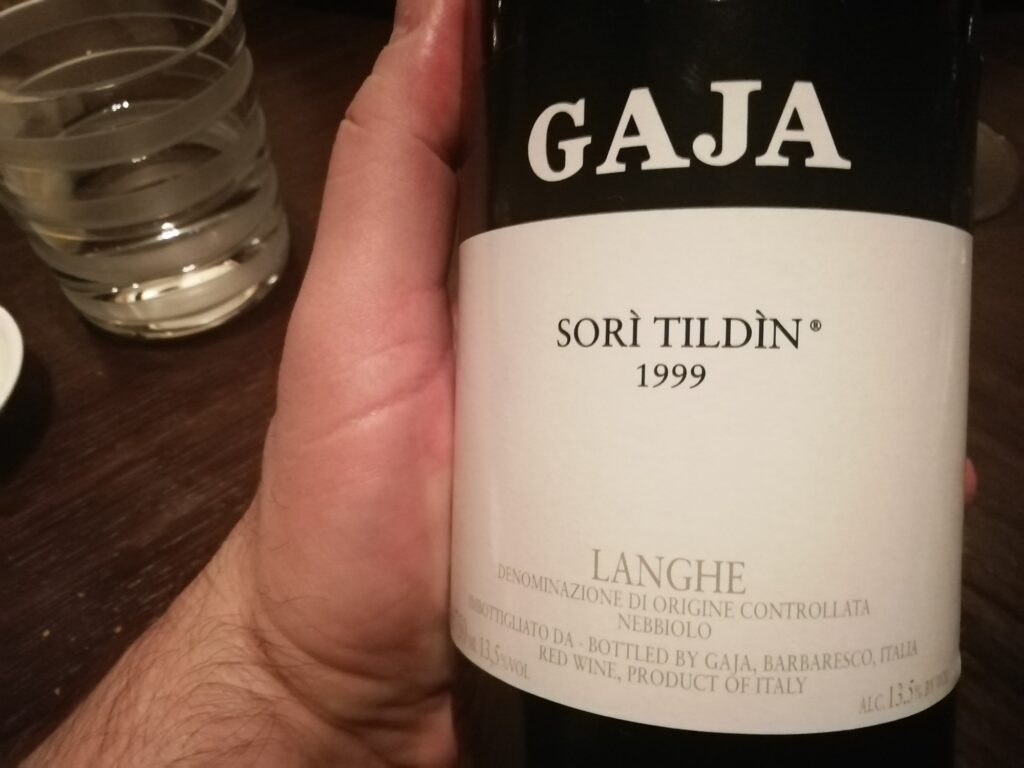
The 2008 Chateau Palmer Margaux is simply a marvelous wine from a vintage that was underrated at the time of the Primeurs but has turned out better than expected. This wine is everything a classic great Bordeaux is all about: no overripe aromas of black fruits and high alcohol, no abnormally high PHs and soft sweet mouthfeels, but rather pure, refined and sleek delivery of Margaux terroir- filtered expressions of Cabernet Sauvignon and old vine Merlot (Palmer is famous for the quality of its Merlot vines). Even better, it is drinking just beautifully now and will last another twenty years easily. The 1999 Gaja Sorì Tildin is one of the best versions ever of this wine, made with Nebbiolo grown in the outstanding Roncagliette vineyard and a percentage of Barbera (this is why the wine label does not carry the word Barbaresco; today, Sorì Tildin is a Barbaresco again). Deep, luscious, clean and well balanced, this ‘99 is impossible not to like and showcases well the fleshy rich style that was typical of this wine in those years. A real crowd pleaser, this has always seemed to me to be one of the most successful versions of Sorì Tildin from that time period. Last but certainly not least, we closed our meal with the spectacular 1990 Domaine de la Romanée Conti Grands Échézeaux. There is simply not much I can say, save that it is quite simply one of the best red wines I have ever tasted and by far the best Grands Échézeaux I have ever had. The words “great wines” are thrown around quite a bit these days and I dare say there are now different shades of “great”, but certainly the moment in time you drink a wine in also plays a role. And so, while a DRC La Tache or Richebourg from 2005 or 2009 might one day prove superior to this Grands Échézeaux, the fact remains that at the present time this still very young wine is drinking so superbly, so perfectly even, that it is of a level of greatness that is superior to that of younger wines from more famous sites (and hence my score, higher than that that of most other wine writers). A magical and extremely powerful potion of red cherry, minerals, oriental spices, soy sauce, balsamic vinegar and violets, I simply have never had a Grands Échézeaux remotely as good as this one. Granted, the combination of a century type vintage (1990 is one of the best Burgundy vintages of all time) and the talent level at DRC is such that magic results more often than not, but this 1990s is of a scale, breadth and complexity that is hard to fully express in words. What made this particular bottle even more unforgettable was the pristine shape the wine was in, still youthful and with many decades of life ahead. It certainly contributed to making a fun, memorable evening that much more memorable.

Il Ristorante-Niko Romito
Bulgari Hotel Bejing
No.8 Xinyuan South Rd, Beijing
+86 10 85558555
The dinner
Marinated seabream, oscietra caviar, sour cream and extra virgin olive oil
(Orata marinata, caviale oscietra, panna acida e olio extra vergine di oliva)
Steamed langoustines with mayonnaise of langoustines, lettuce and chili pepper
(Scampi al vapore con maionese di scampi, lattuga e peperoncino)
Homemade codfish ravioli, beans, codfish sauce and marjoram
(Fagottino di baccala, fagioli, salsa di baccalà e maggiorana)
Baked codfish with chickpeas and garlic sauce, traditional balsamic vinegar
(Merluzzo carbonaro, con salsa di ceci, aglio arrostito e aceto balsamico tradizionale)
Bread and chocolate
(Pane e cioccolato)
The wines
2018 A&P Villaine Bouzeron 93
2017 Joseph Drouhin – Vaudon Chablis Vaudesir 93
2018 Thibault Ligier-Belair Corton Les Renardes 93
2007 Domaine Ponsot Clos de la Roche Cuvée Vieilles Vignes 94
2008 Chateau Palmer Margaux 95
1999 Gaja Sorì Tildin 95
1990 Domaine de la Romanée Conti Grands Échézeaux 98

 English
English
